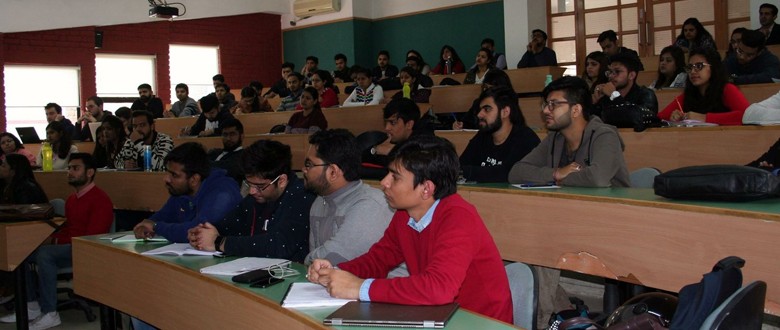Written by:- Ms Manika Mahajan (PGDM 2019-21, IILM Greater Noida Campus)
Social networking has become one of the most popular communication tools to have evolved over the past decade, making it a powerful new information-sharing resource in society. In every aspect of our lives, social networking becomes a part of nowadays. Some of the widely used social networking sites(SNS) are Whatsapp, Facebook, Instagram, LinkedIn, Twitter, Youtube, etc.
We cannot deny ever since social media came into our lives, it has changed the pattern of living- the way we socialize, interact, plan, or execute. Social networking has widely become a part of our education system now. Starting from elementary school up until university graduation, social media has the role to empower parents, students, and teachers on how to use new ways of sharing information and build a community. From finding a summer internship to promoting a success story about how to win the student-loan battle or collaborate on international projects, everything is made possible with these community-building sites. Collective intelligence has become a hashtag trending episode for today’s student-teacher relationship promoting collaboration and sharing of knowledge. Today’s youth is already well equipped with these sites and use this space for building a conducive learning environment and this gives educators a platform to create an online framework for education system #Education 4.0. Users are not just passive observers now, rather they became collaborators and contributors to new sites and fresh content across all platforms. The internet is a research network now which creates knowledge through shared experiences and collaboration of its users.
Chalk and Blackboard form the two most important elements of a classroom in our education system for decades. A teacher seems to be incomplete without these. Education 4.0 says “My lord, this statement is not true”. A teacher may ask its students “Discuss the Impact of covid19 on the Indian economy” on twitter by using two hashtags. Won’t it be a more innovative, up to date and interesting way for students to learn? There is always a complaint by parents “My son spends a lot of time on Facebook”, pondering on it Education 4.0 says “why not take Facebook as a source for learning?”. Facebook has many pages related to courses or areas of interest of students. Teachers and students can both join that page and debate on the posts in the comment section. Is it not helpful for collective intelligence? The answer is yes, it will help the student to be in touch with teachers and the latest updates in the mode they are comfortable at. In this way, they will learn and retain more.
The use of social media in education provides students with the ability to get more useful information, to connect with learning groups of their interest and other educational systems that make education convenient. Online classes on YouTube to web-based courses are helpful to create an anywhere- anytime learning environment for students. All it requires is the student’s own efforts to use these tools to learn beyond the classroom too. Social networking helps to reduce stress and increase satisfaction among students. It allows each student (slow or quick) to study at their own pace and speed (self-pacing). It helps in building strong teacher-student relationships as the student becomes more comfortable with interacting with teachers in both online and offline platforms. Allowing the use of technology and social networking sites in the classroom to read content and participate more is still not applicable in every school/college’s education system because of the fear that it would distract the student. And it is true in some cases but to focus on the purpose of using it in the desired way depends upon student’s willingness to learn and improve.
To hear some scholars speak we have-The use of social networking tools has impacted positively through creating diversification between different categories of people and has supported them in both their personal and academic lives . There are four fundamental social software tools: 1) Connectivity and social rapport, 2) Collaborate information discovery, 3) Content reaction, and 4) Knowledge and information aggregation and content modification . These affordances have helped learners access their knowledge easily and share them anytime and anywhere. Social networks, such as e-learning technologies, provide an opportunity for educators to revise their content quickly and maintain control over it, learn the sequence pace of learning, time – and often media, which allows them to gain experience to meet their learning objectives . Klamma illustrated that one of the most important advantages of social networking is the ability to manage knowledge and learning by connecting with different experts and knowledgeable people to share common processes, activities, tools, concepts, etc.
In today’s society, we face differences between Generation Y(the students who grew up using upgraded technology) and Generation X(the teachers who were forced to use this technology). Being a generation gap between the two brings forward different mindsets and perspectives. The famous author Blankenship,believes that technology in education should be focused on what students use instead of what the school or teachers want. He also believes that when the students become the stakeholder, it will be geared towards their needs, avoiding the need for collaboration between different generations of educators and students. Social networking becomes a medium for such integration. There may be certain training and time required for teachers and students to get well equipped with this new education system, but once applied the efforts are worth it.
Social networking in education also proves to be a good medium in times of emergency. The best example is the current scenario of the Covid-19 pandemic spread across the world. The situation has forced us to stay home but it didn’t force us to stop learning. Social networking sites became the medium to study far from institutions too. It helped teachers and students to stay connected and complete their studies and even learn more than the school/college curriculum. Live online lectures, recorded online video classes, new online courses, online assignments and projects have helped students and educators to not let the studies and careers of students get harmed in these tough times.
Some may highlight the cons of social networking by saying it can be a reason for the distraction of students, privacy, and security issues are there, internet connectivity may be a challenge at remote locations, etc. To some extent their concerns are right. But with the improvement in technology day by day strict privacy and security are being taken in making the applications more safe and secure. And as far as the distraction of students is concerned, educators should channelize student’s skills and energy in a more productive way that they tend not to be distracted. They can be given challenging tasks from their area of interest and the online/offline platform they are comfortable at to prove their worth and can be equally appreciated and awarded for their performance. This will build up their morale and boost enthusiasm.
Student interaction is at the core of a constructive environment and Social Networking Sites provide a platform for building collaborative learning communities. By their very nature, they are relationship-centred and promote shared experiences. A range of activities should be inculcated in the education system where students get to interact more and gain experiences. Knowledge and shared experiences become a base for students to develop and social networking is the channel for building that base. Both students and educators have to understand that social networking is not merely a leisure facility but it is much more than that. They should find out the deep potential which this facility holds so that it can be used in the best and most productive way possible. And this has to be done now because we are rapidly moving to a fully digital era and this potential is to be used now to be a helpful tool for the future years. At IILM campus, we have such networking amongst students, alumni and professors through various virtual networking applications. Thus, Education 4.0 is the superman for the youth of today. If its powers are well researched and presented to students and teachers, they are going to be the biggest fan of it.




